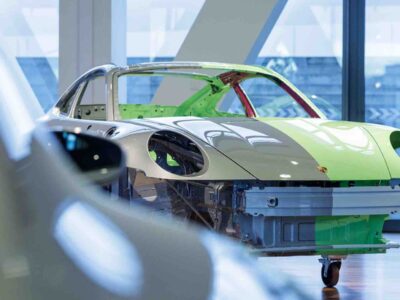It’s hard to tell when the future will actually come. A few decades ago, communication was dominated by the landline phone. Suddenly the car phone was invented, and society began to transition from wondering if mobile phones could potentially exist — to wondering when the first portable phone would come. This law of technological advancement has always held true: what at one point seemed impossible based on current understanding eventually becomes normal.
With any hope, this is how the electric trucking industry will evolve. The transportation sector in the United States currently makes up 29 percent of the nation’s greenhouse gas emissions, with diesel trucks being a strong contributor to that total. A majority of the international community has settled on a variety of emissions pledges over the coming decades, but critics have questioned whether or not these targets– generally along the lines of having a 50 percent total emissions reduction by 2030, and a carbon-neutral goal by 2050– are achievable given the monumental shift that would be required. A recent study conducted in collaboration with several trucking companies, non-profits and governmental agencies has concluded that, for the trucking industry, an electric transition is a lot more doable than many would assume.
In this study, piloted by the North American Council for Freight Efficiency (NACFE) and the Rocky Mountain Institute (RMI), data was collected on a variety of electric trucks and delivery vans across six states. With the help of several major freight companies, these vehicles were tracked making a wide range of daily deliveries in order to accurately simulate the real world. In sum, the findings of the study indicate that as many as five million medium and heavy-duty trucks could immediately be converted into electric alternatives. There would be no adverse effect on the business of the freight companies themselves – in fact, the study shows that these trucks could make the switch without interrupting or changing their routes whatsoever. “There are some parts of the market that are ready today,” said Mike Roeth, executive director for the NACFE. Roeth, who oversaw the study as well as two additional NACFE truck efficiency studies in past years, went on to say that it makes “economic sense to switch over, between the lower fuel costs and the lower operation costs of these electric vehicles”.
Where a frequent barrier to adopting newer technologies is the greater cost, the opposite will soon be true for trucking. Maintaining the internal combustion engines that power these behemoths is a sizable chunk of the industry’s overhead. By comparison, electric trucks are actually much cheaper to maintain. While it is true that the traditional models are debatably more cost-efficient than electric alternatives if we compare them on a “total-cost-of-ownership” basis, this is largely due to the higher up-front costs of current generation electric trucks. This is due to the infancy of that sector, and rapid improvements to production costs are dropping – so much so, that electric trucks are expected to become less expensive than traditional trucks in terms of total-cost-of-ownership by 2025.
If the 5.2 million eligible trucks were replaced with electric alternatives, the switch would have monumental implications for the American trucking sector.
While transportation as a whole makes up 29 percent of carbon emissions in the US, trucking itself is responsible for 25 percent of that.
This is despite the fact that trucks comprise less than four percent of vehicles on the road. According to Roeth, the change would bring carbon emissions within the sector down to 350 million metric tons annually, a change of 100 million tons year over year. This is the equivalent of 25 coal-fired power plants disappearing into thin air, making it a no-brainer for industry heads and lawmakers alike.





